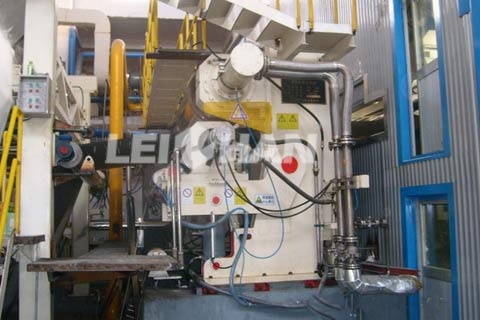Calender Machine Supplier

As the sheet undergoes the drying process there is a tendency for the fibers to lift slightly, it is passed through a stack of heavy metal rolls where it is calendered under high pressure. The purpose of the calender stack is to compress the sheet and give it a fine smooth finish. The effect is achieved on both sides of the sheet by the friction and pressure extered at the roll nips.
Calender Machine Function
The principal objective in calendering is to increase the smoothness and finish of the paper. Calendering also reduces the thickness and increases the density, the thickness after calendering being inversely proportional and solid fraction being directly proportional to the lineal pressure of calendering. Calendering nakes the paper more uniform in thickness, but this unifority in thickness is obtained at the expense of uniformity in density. The opacity of the paper is reduced because the fibers are pressed closer together, thereby destroying the air-fiber interfaces. The paper is expanded in both the machine and cross directions, so the calendered paper has a greater area than uncalendered paper. As a rule, calendering increases the tensile strength slightly, although too drastic calendering will reduce tensile strength. Bursting strength is not greatly affected by calendering, but bearing strength and folding endurance decrease upon calendering, the greatest loss occurring at the higher calendering pressures. Calendering tends to break down the structure of the paper, thereby increasing its viscous flow properties. Porosity is reduced and oil absorbency is reduced, particularly when the paper is calendered at high moisture content.










